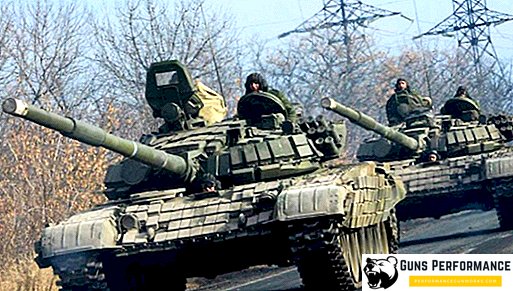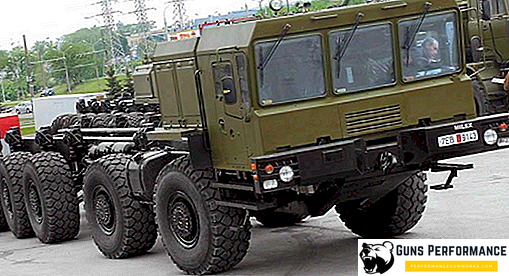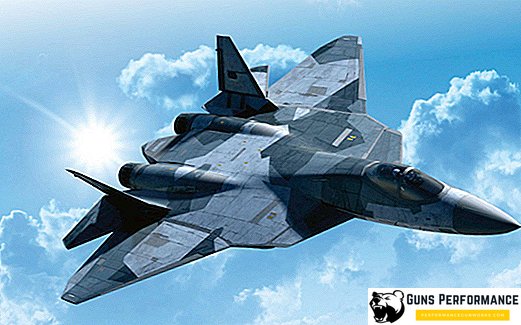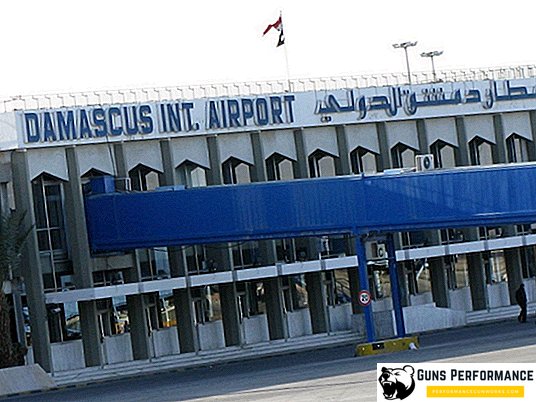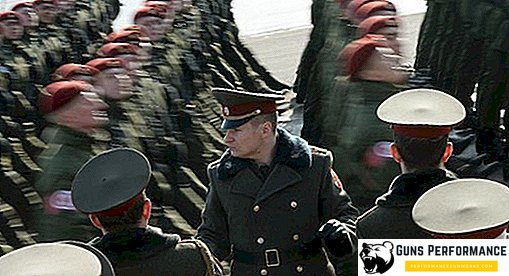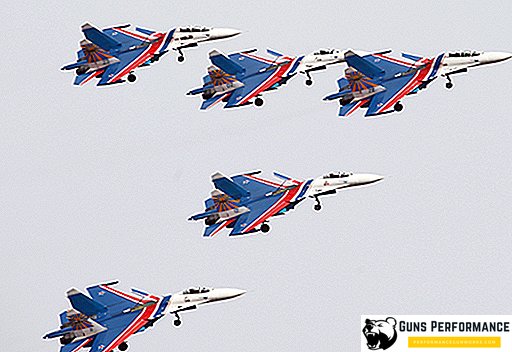The German submachine gun MP-40, which in the USSR was called "Schmeisser", is the same legendary weapon as the PPSh submachine gun or Mosin rifle. Thanks to the Soviet cinema, the typical character of the Hitler soldier was a youngster with rolled up sleeves, scorching from the hip of the MP-40. Immediately it should be noted that the MP-38/40 submachine gun was not the most common, nor even the most popular type of small arms in the German army. But at the same time MP-38/40 is one of the best types of submachine guns of its time. True, he had nothing to do with the talented German weapons designer Hugo Schmeisser.
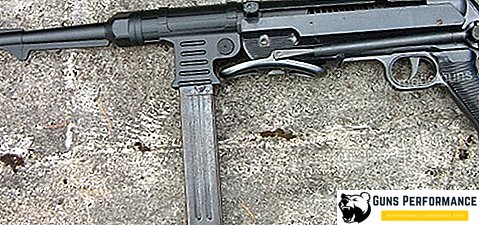
History of creation
The first submachine guns appeared during the First World War. According to the developers, this rapid-fire small arms, using a pistol cartridge, should have significantly increased the firepower of the advancing troops.
Under the terms of the Versailles Peace, Germany was allowed to arm police units with machine guns, and in the 1920s and 1930s, new types of such weapons were actively developed in this country. One of those involved in the design of new submachine guns was the talented German designer Heinrich Folmer.
He made several successful samples of submachine guns from 1925 to 1930. In 1930, the German company ERMA acquired all the rights to the weapons created by Volmer. Soon the Nazis came to power in Germany, and now new submachine guns were being developed for the needs of the German army.
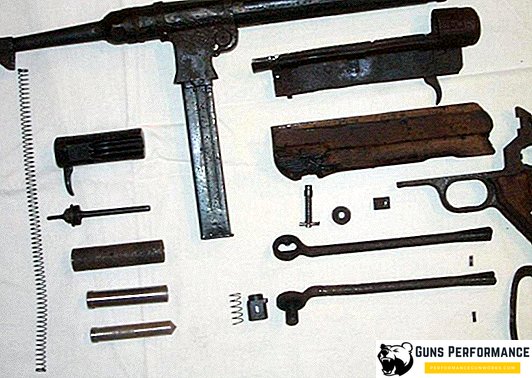
In the mid-1930s, ERMA launched the submachine gun EMP 36, which was essentially the forerunner of the MP-38 and MP-40. This weapon strongly resembled previous samples of the pistol-machine guns created by Volmer, but there were many innovations in it. The wooden box has disappeared, it was replaced by a metal frame, the store was located at the bottom of the weapon, replacing the wooden handle. Wooden butt replaced the folding metal stop. In general, the weapon has become familiar to us from the films appearance. True, the store was directed slightly forward and to the left of the axis of the machine.
But the main thing was different: the developers, foreseeing the future scale of production, applied new technologies, namely the method of cold stamping. So they were able to make the EMP 36 much cheaper and simplified its industrial production. However, the new submachine gun had a lot of flaws, and the manufacturer had to revise it. As a result, the MR-38 machine gun appeared.
At first it was produced in small batches, less than nine thousand units of these weapons were delivered to the troops, but the beginning of large-scale military operations completely changed this situation.
For its time, the MP-38 had a revolutionary design. He did not have the usual wooden butt, which made it especially convenient for tankers, paratroopers, policemen. Wood was not used at all in the manufacture of the MP-38, only metal and plastic (it was first used in the design of submachine guns). The front grip of the weapon was replaced by the magazine, the reload grip moved to the left side, which allowed keeping the finger on the trigger all the time. On the casing of weapons made longitudinal ribs, and the design is widely used aluminum. The relatively low rate of fire of the MP-38 increased the accuracy and controllability of the weapon.
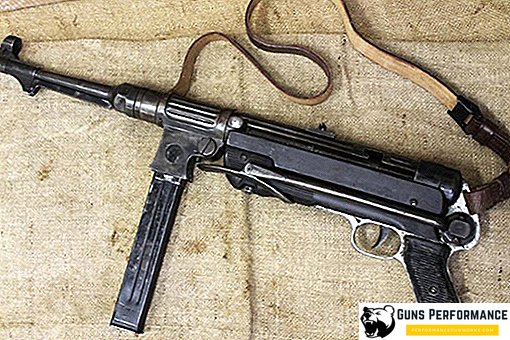
At the end of 1939, a modification of the MP-38 L was released. Its design was simplified. This submachine gun was more suitable for mass production, although due to the wider use of aluminum and became more expensive. Some technical solutions were later used in the development and production of the MP-40.
Work on the creation of the MP-40 was already in 1939. His first installment was released by the end of the year. Gradually, all the enterprises producing the MP-38 switched to the production of a new modification. It was the MP-40 that became the main version of this submachine gun, more than a million copies of this weapon were produced.
The MP-40 submachine gun is simpler to manufacture, with more stamped parts in its design (handle frame, for example), which made it cheaper compared to the MP-38. It has a smaller weight, is different in appearance of the case, there are differences in the mechanism of fastening the store, as well as in the design of the fuse.
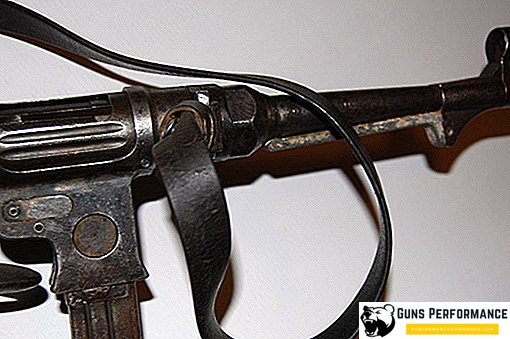
During the war, the MP-40 underwent several changes aimed at further simplifying its design and reducing the labor intensity of production. Experts have five modifications of the MP-40. However, this classification is somewhat arbitrary, because changes were made gradually in different periods and at different factories. At the front, parts of different modifications were interchanged, using old serviceable spare parts for the repair of new machines.
In 1941, Hugo Schmeiser proposed his modification of this submachine gun. He connected the main mechanisms of the MP-40 and the box with the trigger mechanism MP 28 / II. This hybrid could lead both single and automatic fire, had a higher accuracy of fire due to the convenience of a wooden butt. However, it was not adopted for service, was issued in small batches, and also supplied to the armed forces of Romania and Croatia.
In addition, the designers of ERMA developed the MP 40 / I submachine gun, on which it was possible to install two standard magazines simultaneously. But it turned out to be too expensive and difficult to manufacture, so its production was quickly curtailed.
The design of the machine
The MP-38 and MP-40 automatics work by returning the free shutter. With the help of a massive shutter and the barrel is locked. The shot is made at the time of this locking. The massiveness of the shutter, the weakness of the recoil spring and the damper ultimately make the rate of fire low.
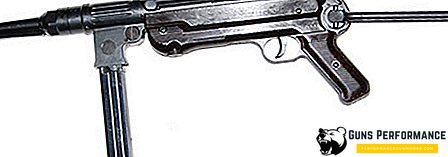
The weapon does not have a fuse; instead, there are two slots in the bolt box, into which the loading arm was inserted, preventing the possibility of an accidental shot. Sights consist of a rack mount and a front sight.
The bolt box is made of cheap steel, the sights are fastened on it, in the front part there is a store neck with a mechanism for its attachment, on the right above the neck there is a window for extraction of sleeves.
The bolt sends the cartridge into the chamber, punctures the primer, and also extracts the liner. Drummer is located in the gate, its base it is based on the return-combat spring, which is located in the casing of the telescopic tube. The tube improves the reliability of the weapon, protecting the spring from contamination.
The butt consists of an axis with a latch, stops and backplate. It folds down and forward under the trigger box.
The power supply of the machine is made from a box magazine with a capacity of 32 rounds. On the first weapon modifications, the stores were smooth, then stiffening ribs were made on them. When firing, it was necessary to hold the weapon by the neck of the store, holding onto the store led to a misalignment of the cartridge.
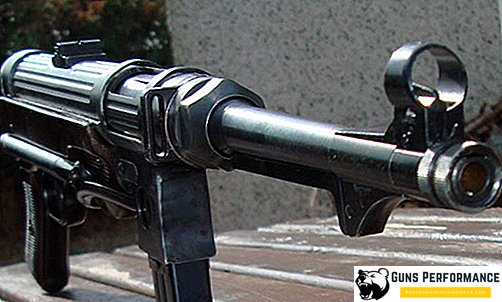
At the bottom of the barrel was made characteristic hook, intended for ease of firing of embrasures, from the sides of armored vehicles or other shelters.
Application of MP-38 and MP-40
At the time of entry into service, the MP-38 was undoubtedly the best submachine gun in the world. Lightweight, compact, reliable - nothing like this was anyone in the world. But this is exactly what prevented the MR-38 from becoming the main machine gun of the German army. A large number of milled parts increased the cost of weapons, making them not very suitable for the role of mass weapons.
Therefore, the MP-40 was developed. Simplification of the design is not reflected in the characteristics of this submachine gun. It was adopted as an individual small arms for tankers, drivers, paratroopers and junior officers.
The undoubted advantages of this weapon include the low cost of production, compactness, low weight, good accuracy of shooting, good stopping effect of the bullet. However, shortcomings were also present.
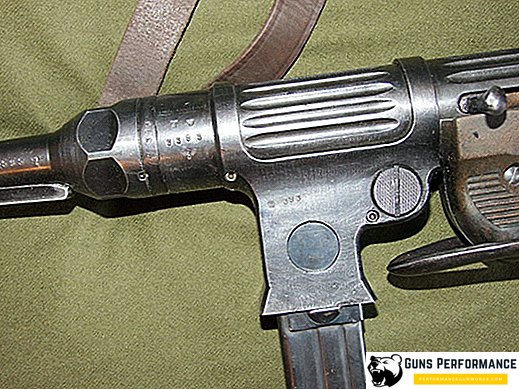
The weak point of the MP-40 was the shop, he demanded a careful attitude (poorly tolerated dirt), it often got stuck. There were problems with the metal butt of the weapon. Butt clamp quickly loosened.
The cartridge itself 9 × 19 mm Parabellum, which was used in the MP-38/40, had a low power and low initial velocity of the bullet.
The disadvantages include the absence of the barrel housing, as well as the difficulty of cleaning weapons in the field.
Despite this, the MP-40 was actively used by German troops throughout the Second World War. The Soviet soldiers did not disdain this weapon, especially the intelligence officers loved it, but PPSh and PPS surpassed the German machine gun in reliability and simplicity of production.
Specifications
| Model | MP 38 | MP 40 |
| Cartridge | 9 × 19 mm Parabellum | |
| Caliber, mm | 9 | |
| Weight unloaded, kg | 4,18 | 3,97 |
| Weight with cartridges, kg | 4,85 | 4,7 |
| Length mm | 833 | |
| Barrel length, mm | 248 | |
| Number of rifling | 6 right | |
| Rate of fire, rds / min | 400 | 500 |
| Effective range, m | 100 | |
| Sighting range, m | 200 | |
| Initial speed of a bullet, m / s | 390 | |
| Amount of cartridges in the store | 32 | |
| Years of production | 1938-1940 | 1940-1944 |



